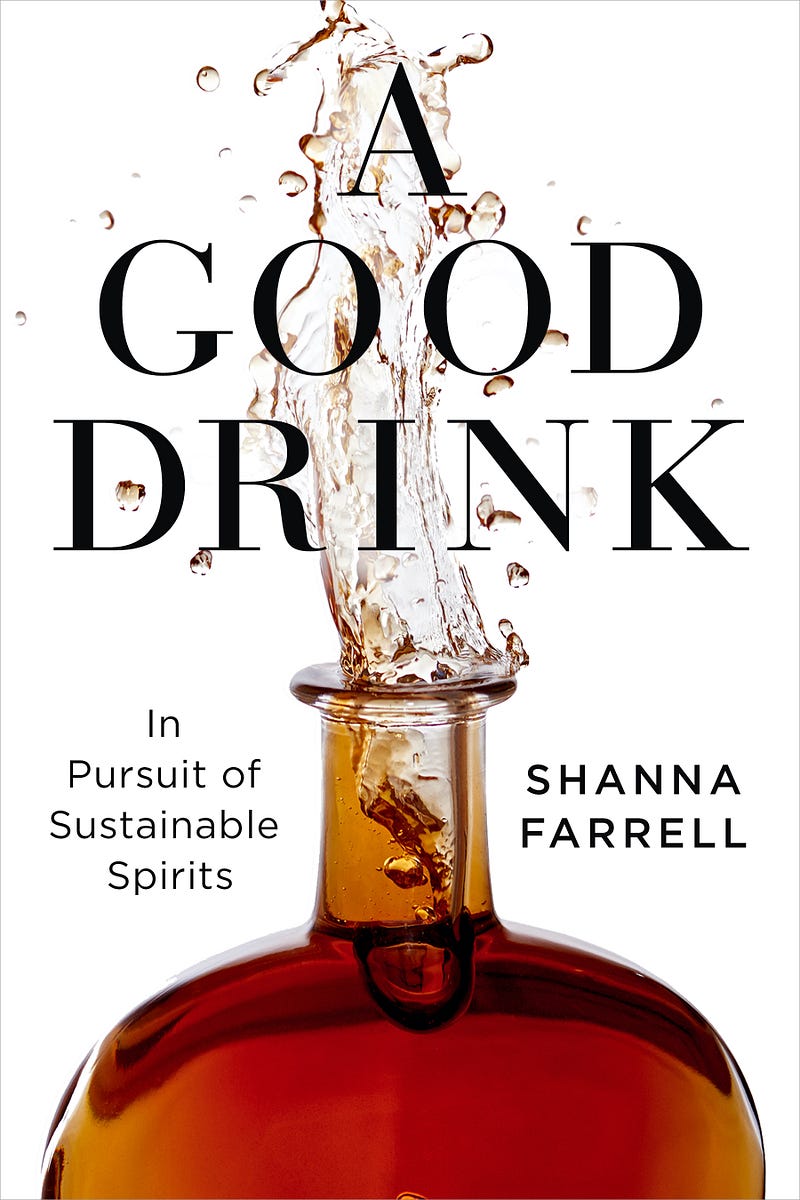Sipping Sustainably: A New Look at Eco-Friendly Spirits
Written on
Chapter 1: The Eco-Conscious Cocktail Movement
When one thinks about cocktails and spirits, sustainability may not immediately come to mind. However, it is becoming an increasingly pressing issue within the industry. For instance, according to the Kentucky Distiller’s Association, a staggering 95% of the world’s bourbon originates from Kentucky, where approximately 1.7 million oak barrels were produced in 2017 alone. Each barrel, required to be crafted from new charred oak, contributes significantly to deforestation. The production process for spirits, including the cultivation of grains like corn, is also highly resource-intensive. This raises crucial questions: Is it possible to produce alcohol and its ingredients in an environmentally responsible manner? Who are the producers committed to sustainability? And how can consumers support these initiatives?
To explore these queries and more, Shanna Farrell, an oral historian and lecturer at the University of California, Berkeley, embarked on a journey to uncover the truth. In her enlightening book, A Good Drink: In Pursuit of Sustainable Spirits (Island Press; 2021), she shares her experiences and insights gained from interviewing individuals involved in the agricultural and production aspects of spirits.

Chapter 2: Spirits and Sustainability
Farrell’s dual role as both an oral historian and a bartender living in San Francisco, a hub of farm-to-table dining, sparked her interest in the lack of eco-consciousness in the alcohol sector. While many recognize the importance of sustainable agricultural practices, spirits are often overlooked as food products. In reality, the majority of spirits, whether rum, brandy, whiskey, or tequila, are derived from crops that share space on our plates. Unfortunately, these crops are frequently treated with harmful pesticides, and the distillation process requires vast amounts of water. Moreover, bars are notorious for their waste generation.
Although the movement toward sustainable drinking is lagging behind the good food movement, it is gaining momentum, and Farrell’s accessible writing style makes her book an essential read.
On her quest, she engaged with various stakeholders to discuss sustainable farming practices and how to encapsulate the essence of ingredients in spirits. She delves into the stories of those who cultivate the fruits and grains used in production, exposing the origins of some cocktail colors and flavors. Her exploration takes her through distilleries of varying sizes that have implemented eco-friendly practices, from the water-saving strategies of mid-sized distillers like Leopold Brothers to the sustainable forest management at larger operations such as Maker’s Mark. While these producers recognize the need for further action to reduce their environmental footprint, they also face the challenge of maintaining affordable prices for their products.
The video titled "A Good Drink with Shanna Farrell" provides an engaging overview of her journey and the sustainable practices in the spirits industry.
Chapter 3: Acknowledging Historical Contributions
In addition to addressing sustainability, Farrell’s work also highlights the historical context of the spirits industry. In an online discussion, she emphasized the importance of recognizing the contributions of enslaved individuals, whose knowledge of alcohol production has often been overlooked. “The spirits industry wouldn’t exist without them,” she remarked, stressing the need to acknowledge the broader systems of power, including colonialism, that have shaped the industry.
While this book does not provide an exhaustive analysis of sustainability in spirits, it presents a compelling collection of narratives that showcase various perspectives on the topic. One particularly insightful chapter features conversations with mezcal producers in Guadalajara who prioritize traditional methods that benefit both their land and local communities. Another chapter highlights a distiller in South Carolina who partnered with a farmer to revive a nearly extinct heirloom corn variety to craft a sought-after bourbon. (Interestingly, Farrell refers to this corn as ‘Johnny red corn’, while it is commonly known as ‘Jimmy red corn’.)
This engaging and informative book serves as an eye-opener to the intricate ties between agriculture, environmental issues, and our choices in spirits. It offers a hopeful glimpse into the collective efforts of countless individuals within the industry who are genuinely committed to sustainability and the preservation of our planet’s future.
NOTE: I received a hard copy of this book from the publisher in exchange for my honest, unbiased review. Additionally, as an Amazon Associate, I earn micropayments from qualifying Amazon purchases made through links in this piece.